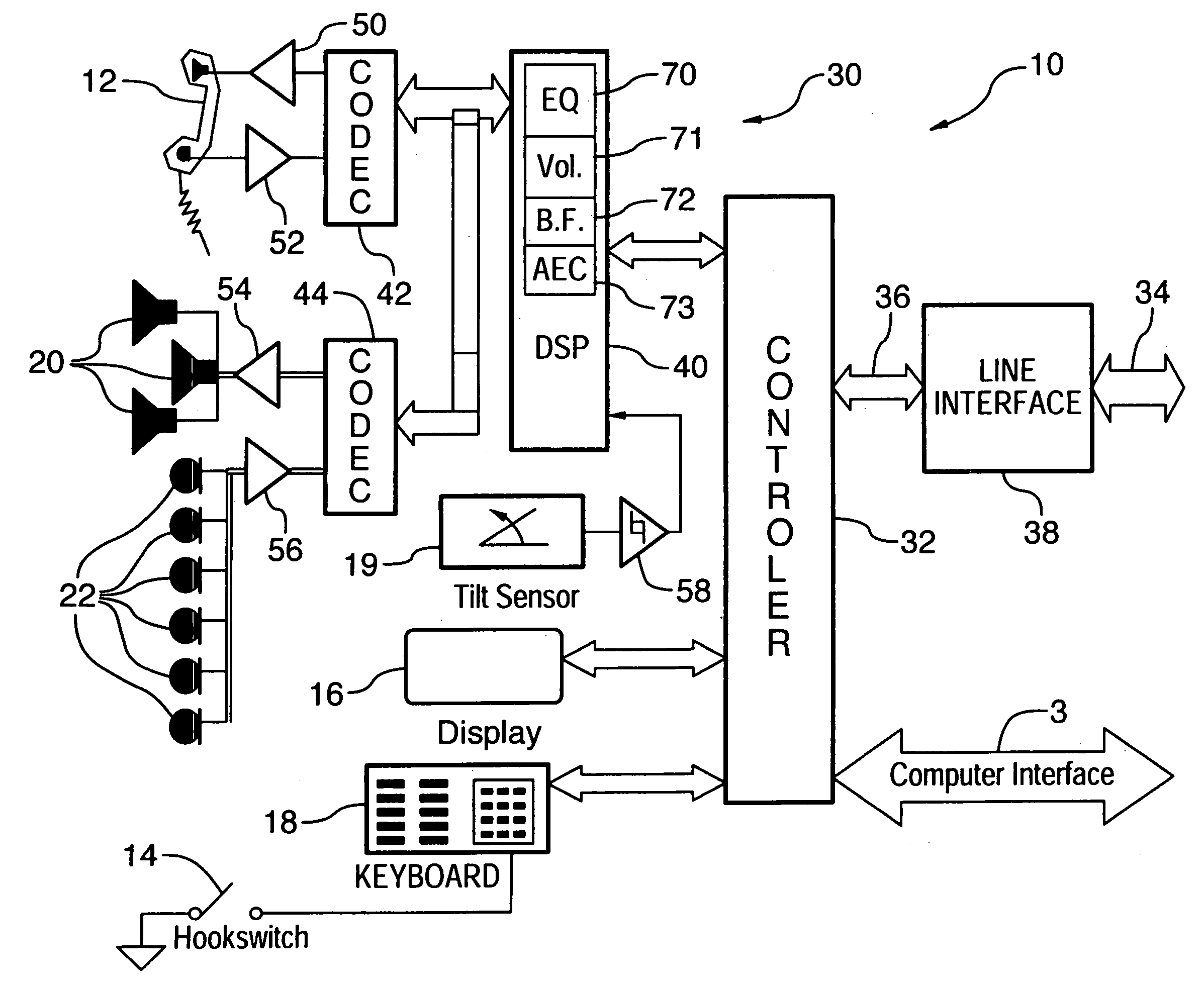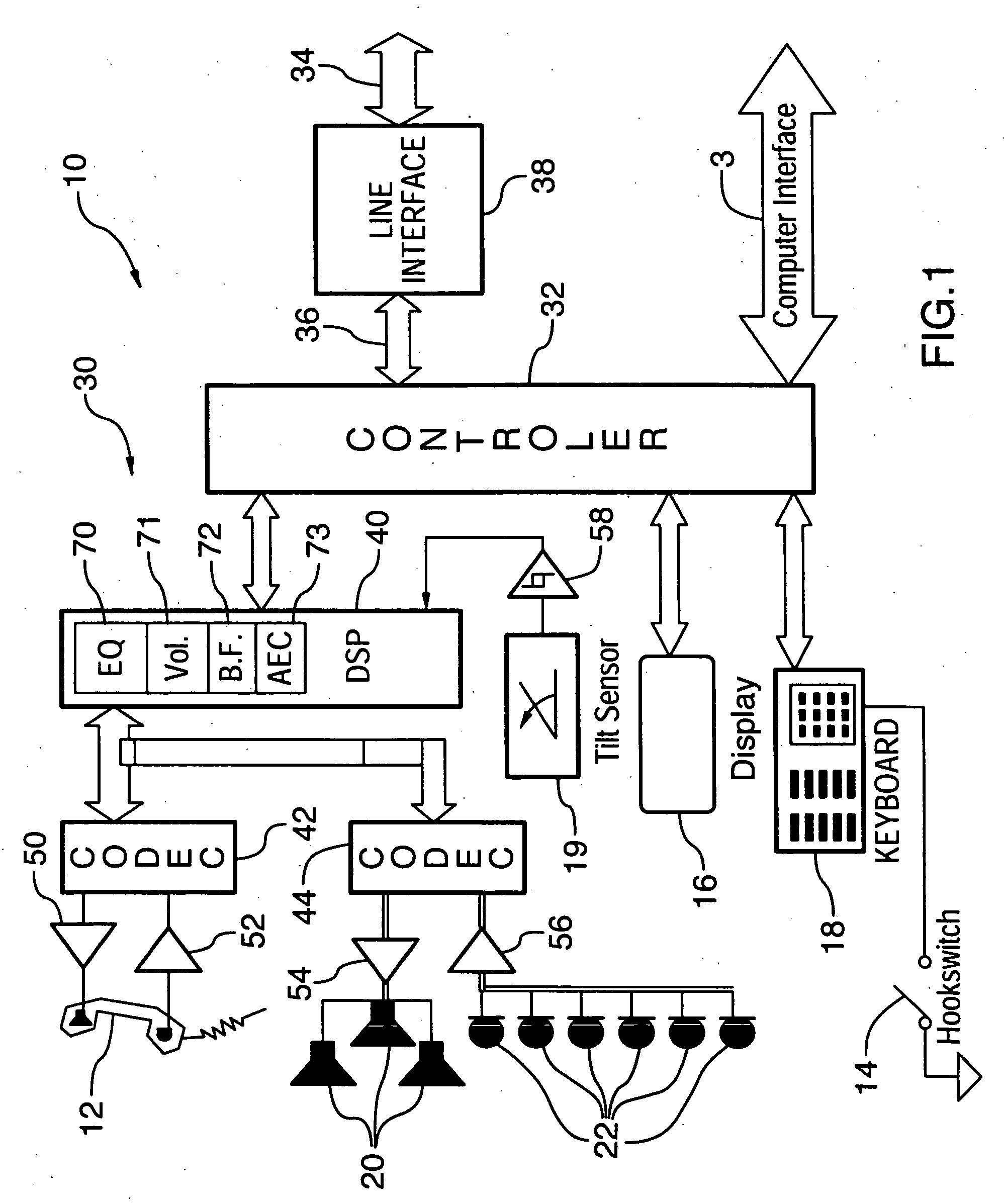Method and apparatus for optimizing speakerphone performance based on tilt angle
a technology of tilt angle and optimizing speakerphone performance, applied in the field of speakerphones, can solve the problems of most expensive solution and greatly affecting the behavior of tilt angl
- Summary
- Abstract
- Description
- Claims
- Application Information
AI Technical Summary
Benefits of technology
Problems solved by technology
Method used
Image
Examples
Embodiment Construction
[0018] Turning now to FIG. 1, a loudspeaker telephone 10 is shown, commonly referred to as a “speakerphone”. Loudspeaker telephone 10 includes a housing (not shown) with a cradle that accommodates a handset 12 and an associated hookswitch 14 within the cradle. A display 16 and a keyboard 18 are provided on the housing. At least one loudspeaker (an array of loudspeakers 20 is shown), and at least one (an array of microphones 22) are also provided in the housing to enable “hands-free” calls to be made.
[0019] Disposed within the housing are the loudspeaker telephone electronics generally indicated to by reference number 30. As can be seen, the loudspeaker telephone electronics 30 include a controller 32 coupled to a communications line 34 via an audio bus 36 and a line interface 38. The communications line 34 and the line interface 38 can either be analogue public switched telephone network (PSTN), digital time-division multiplexed (TDM), wireless, packet switched (e.g. VoIP, ATM) or ...
PUM
 Login to View More
Login to View More Abstract
Description
Claims
Application Information
 Login to View More
Login to View More - R&D
- Intellectual Property
- Life Sciences
- Materials
- Tech Scout
- Unparalleled Data Quality
- Higher Quality Content
- 60% Fewer Hallucinations
Browse by: Latest US Patents, China's latest patents, Technical Efficacy Thesaurus, Application Domain, Technology Topic, Popular Technical Reports.
© 2025 PatSnap. All rights reserved.Legal|Privacy policy|Modern Slavery Act Transparency Statement|Sitemap|About US| Contact US: help@patsnap.com



